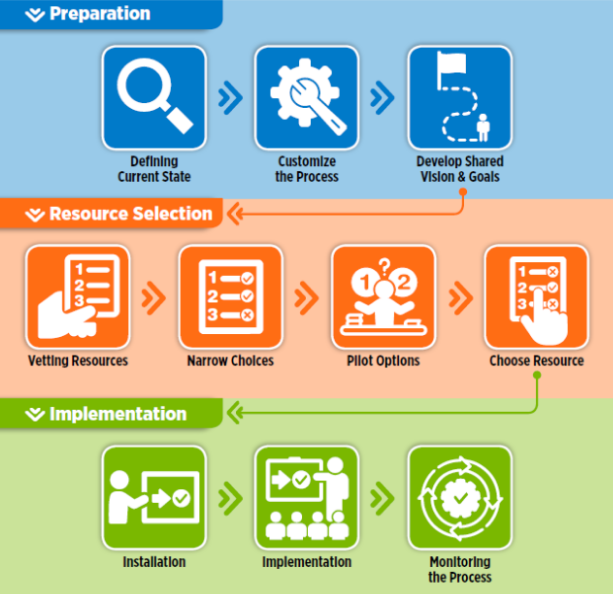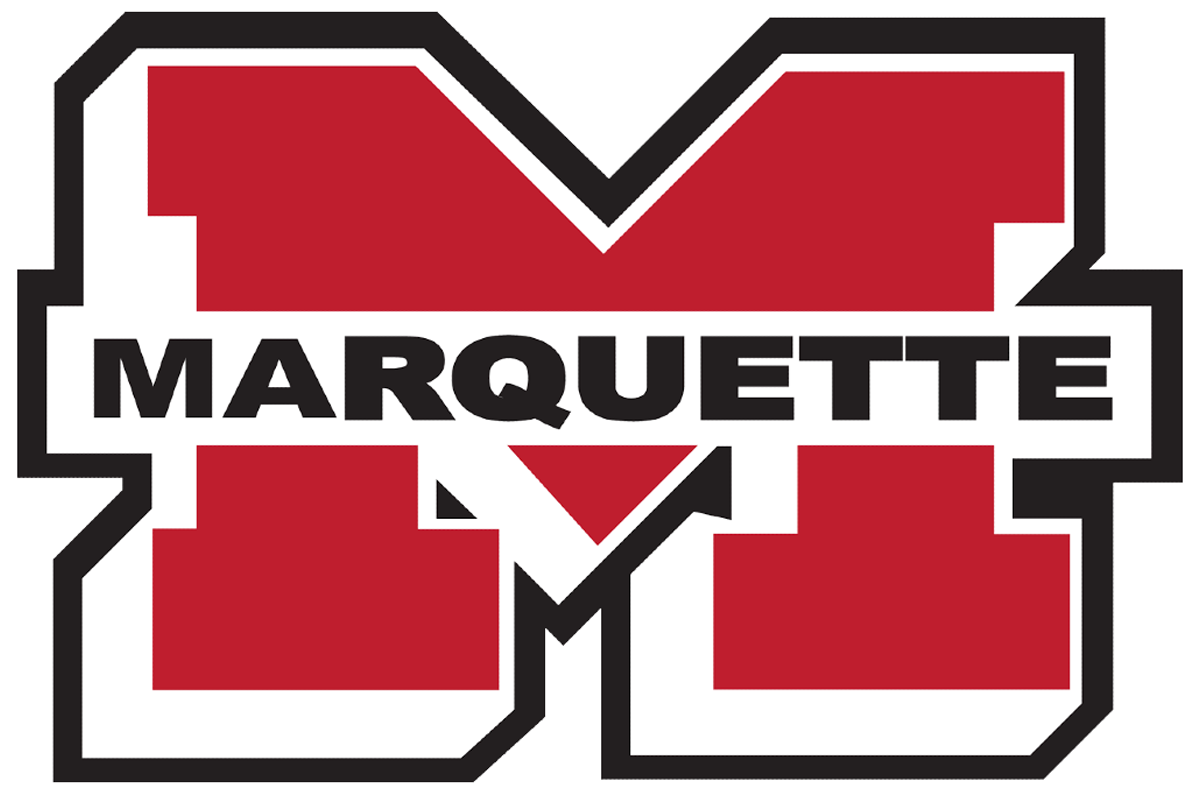TIER 1
What Is Core Instruction?
Tier 1 Instruction Overview
Definition:
Tier 1 instruction is the high-quality, evidence-based general education curriculum and teaching practices provided to all students. It emphasizes prevention and proactive strategies to ensure that the majority of students (80% or more) achieve academic and behavioral success without the need for additional intervention.
Key Features:
Data-Driven Decision Making: Ongoing formative assessments and universal screeners guide instructional decisions and ensure students are making progress toward grade-level benchmarks.
Culturally and Linguistically Sustaining Instruction: Teaching practices actively affirm and incorporate students’ cultural backgrounds, languages, and lived experiences into the learning environment to promote equity, engagement, and belonging.
Social-Emotional Learning (SEL): SEL supports are embedded into daily instruction to foster self-awareness, relationship skills, and responsible decision-making.
Collaborative Planning: Teachers work in professional learning communities (PLCs) or grade-level teams to ensure coherence, equity, and shared responsibility for student learning.
Universal Access: All students receive Tier 1 instruction regardless of background, identity, or ability.
Standards-Based, Research-Validated Curriculum: Instruction is aligned to state and district standards and uses curriculum materials that are grounded in research and proven effective for a broad range of learners.
Evidence-Based Practices: Teaching strategies are supported by research and shown to be effective for the majority of students.
Explicit Instruction: Critical content is broken down into smaller steps. Lesson goals are shared. Review of previous content is delivered as interactive, retrieval practice. New content is presented at a brisk pace using clear, concise, and consistent language beginning with teacher modeling, or “I do,” followed by guided practice, or “We do,” and ending with checking for understanding during independent, monitored practice, or “You do.”
Differentiation: Instruction is intentionally adapted to meet the diverse academic, cultural, linguistic, and social-emotional needs of all learners. Supports and modifications are data-driven and based on student need, thus ensuring that every student, including those with 504 Plans or IEPs, receives instruction that helps them access content, engage meaningfully, and achieve success.
Scaffolding: Instructional supports are intentionally designed and delivered to help students access grade-level content and build independent learning skills. These temporary supports—such as modeling, guided practice, visual aids, sentence frames, and structured peer collaboration—bridge gaps in understanding without reducing rigor. As students gain proficiency, scaffolds are gradually removed, promoting confidence, autonomy, and long-term mastery.
Feedback: Informative, affirmative, and corrective feedback is provided to students. What is done well is acknowledged, and areas in need of improvement are recognized. Students are given specific, clear, and timely corrections with actionable steps for growth.
Purpose:
The purpose of universal core instruction is to ensure a guaranteed and viable curriculum for all students, personalized learning experiences, and assessment practices that promote student ownership, self-reflection, and a focus on the transfer of learning in applied settings.
To ensure an aligned, equitable, consistent, and personalized Tier 1 Universal Learning Experience, MAPS educators work collaboratively and consistently using common instructional resources, including:
Content area standards
Unit learning intentions
Learning Targets & Success Criteria
Common assessments
How, When, & Where is it Done?
Instructional Practices & Materials
As a district, we use the protocol shown below as we evaluate, adopt, and implement instructional practices and materials.

Tier 1 Instructional Materials and Practices:
1. Universal Design for Learning (UDL) and Differentiation Among the Tiers
Involves changing the pace, level, or type of instruction to meet diverse needs in the classroom.
2. Common Planning Time for Teachers
Common planning time allows for teachers in the same grade or content area to plan purposeful, flexible groups among the tiers. This time is also used for teachers to analyze assessment data to address the needs of students in a timely manner. Support specialists can also meet with teachers during this common time to offer support and insight related to their area of expertise.
3. Universal Screening for All Students 2-3 Times a Year
Screening is a quick assessment of a student’s understanding, and it gauges knowledge and abilities. It supports instruction by benchmarking where students are at a specific point in the school year compared to grade-level expectation and supports the creation of intervention groups when students fall below expectation.
4. Targeted Interventions and Defined Goals
Intervention strategies align with the specific needs of individual students and help them reach academic and/or behavior proficiency goals as defined by district and state standards.
5. Purposeful Progress Monitoring
Regular Progress Monitoring determines if students are making progress on defined goals, allows educators to make data-based decisions about the effectiveness of their strategy and informs future instruction.
6. Evidence-Based Teaching
Teachers use methods and strategies proven effective through research, are backed by data analysis and are consistently linked to positive learning outcomes, increased engagement and enhanced learning experience.
7. High-Quality Professional Development
High-quality professional development is linked directly to our MTSS implementation and is designed to equip educators with the skills to enhance student learning and stay informed on best practices. It fosters a culture of continuous learning in schools as well as a strong professional community.
Universal (Tier 1) Instruction and Supports include:
Implementing well-researched programs and best practices for academics, behavior, and social-emotional wellness
Planning flexible grouping and differentiation
Delivering integrated instruction and intervention that is designed to meet the needs of all learners
Providing structures and systems for creating a positive school and classroom climate
Ensuring cultural proficiency and inclusiveness
Clear Expectations for Student Behavior - Student Handbook
Positive Behavior Interventions and Supports (PBIS)
Horizontal & Vertical Alignment - Horizontal and vertical alignment of Tier 1 clarifies expectations and builds students’ skills from one grade level to the next. This requires that teaching and learning objectives are based on standards and benchmarks for academic content areas and social-emotional competencies, and are well articulated from one grade to another. In addition, alignment is achieved through a well-defined articulated scope and sequence that is used within grade levels and content areas to ensure equitable learning experiences are guaranteed and viable for every student.
Assessment and Data-Based Decision Making at Tier 1
Universal Screening - Universal Screening provides information that can be used to determine (a) the effectiveness of the Tier 1 practices to promote student success and (b) which students might require additional support. The first part of this definition, related to the health of Tier 1 and resource allocation, is addressed below. Guidance around student-level decision making is provided in the Tier 2 chapter of this playbook.
Grade Level(s) | Assessment Name | Domain(s) Assessed | Time of Administration |
|---|---|---|---|
JK | FastBridge | READING | 3 times per year |
K | FastBridge | READING | 3 times per year |
1st | FastBridge | READING MATH | 3 times per year |
2nd | FastBridge | READING: aReading MATH: aMath | 3 times per year |
3rd | Fastbridge | Fluency, CBMReading | 3 times per year |
4th-5th | Fastbridge | Fluency, CBMReading | 3 times per year when benchmark scores are at or below the 30th percentile. |
3-8 | NWEA Reading | Foundational Skills (3-5), Oral Reading Fluency (3-5), Reading Comprehension, Vocabulary, Writing, and Language | 3 times per year |
3-8 | NWEA Math | Number Sense & Operations – Whole numbers, fractions, decimals | 3 times a year |
3-8 | MSTEP Language Arts | Reading Comprehension – Understanding and analyzing fiction and nonfiction texts. | 1- End of Year |
3-8 | MSTEP Math | Concepts & Procedures, Problem Solving & Modeling, Communicating Reasoning. Data Analysis & Probability | 1- End of Year |
6-8 | NWEA Language Usage | Writing: Mechanics, Grammar and Usage, Organization and Style, Revising | 3 times a year |
6-8 | NWEA Science | 3 times a year | |
9-12 | Local Assessments | Subject Specific Content Knowledge and Skills | Throughout the school year, Midterm and final exams |
8-10 | PSAT | Reading, Writing, Math | Yearly; April |
11 | PSAT, SAT, MSTEP, ACT WorkKeys | PSAT/SAT - Reading, Writing, Math; MSTEP - Science & Social Studies; ACT WorkKeys - Career-Relevant Skills | Yearly; April |
6-12 | Early Warning System | Attendance, Course Grades, Behavior Incidents | Ongoing |
Effectiveness of Tier 1 Practices
Measuring and supporting the fidelity of Tier 1 instructional practices promotes the provision of high-quality Tier 1 practices for every student. In order to monitor the effectiveness of Tier I Instruction, Grade Level Teams meet 3-5 times per year to evaluate individual student data as well as trends at the grade, building, and district levels. The Grade Level Team may include any combination of the following: Classroom Teachers, Instructional Coach, Title I Team, Principal, Speech and Language Pathologist, Resource Room Teachers, and School Counselors. Collectively, we use multiple sources of data to inform decisions about instructional practices, student accommodations, and intervention strategies. Teachers meet bi-weekly in PLCs that consist of their grade level teachers and the Instructional Coach to ensure continuity of instruction and overall scope of practice. Instructional Coaches meet regularly to evaluate inter- and intra-building trends, discuss best practices, and consider the fidelity of curriculum use.
Who is Involved?
Family, Student, and Community Engagement at Tier 1
Engagement with families, students, and communities is a process and a practice rooted in relational trust, which creates opportunities for equitable partnerships between families and school and district staff. These partnerships, from birth to graduation, nurture shared responsibility for students’ academic, social, and emotional success and honor the lived experiences, expertise, and cultural knowledge of all educational partners--students, teachers, staff, families, and communities. Community engagement occurs both within and outside of the immediate school community. Through local partnerships, community engagement fosters collaborations that create meaningful opportunities for students, families and communities that otherwise would not exist.
Inclusive & transparent communication between the school district and the community includes the following qualities:
| MAPS Playbook, School Websites |
| Classroom and Building Newsletters, Open House, Curriculum Night, Progress Reports |
| Parent Teacher Conferences, Art, History, SEL Night, Family Math Night, One School One Book, Fall Fest, Field Day |
| NMU, Bay Cliff Camp, Big Brother Big Sister, Scouting America and Girl Scouts, Local Internships, Community Sponsorships, and Scholarships |
| SAT Meetings, SPED, IEP, 504, Staffing, Wrap-around with other service providers |
| After School Activities (Sports, Music, Dance, Theater, STEM), Place-Based Learning, Dances, History, Art |
